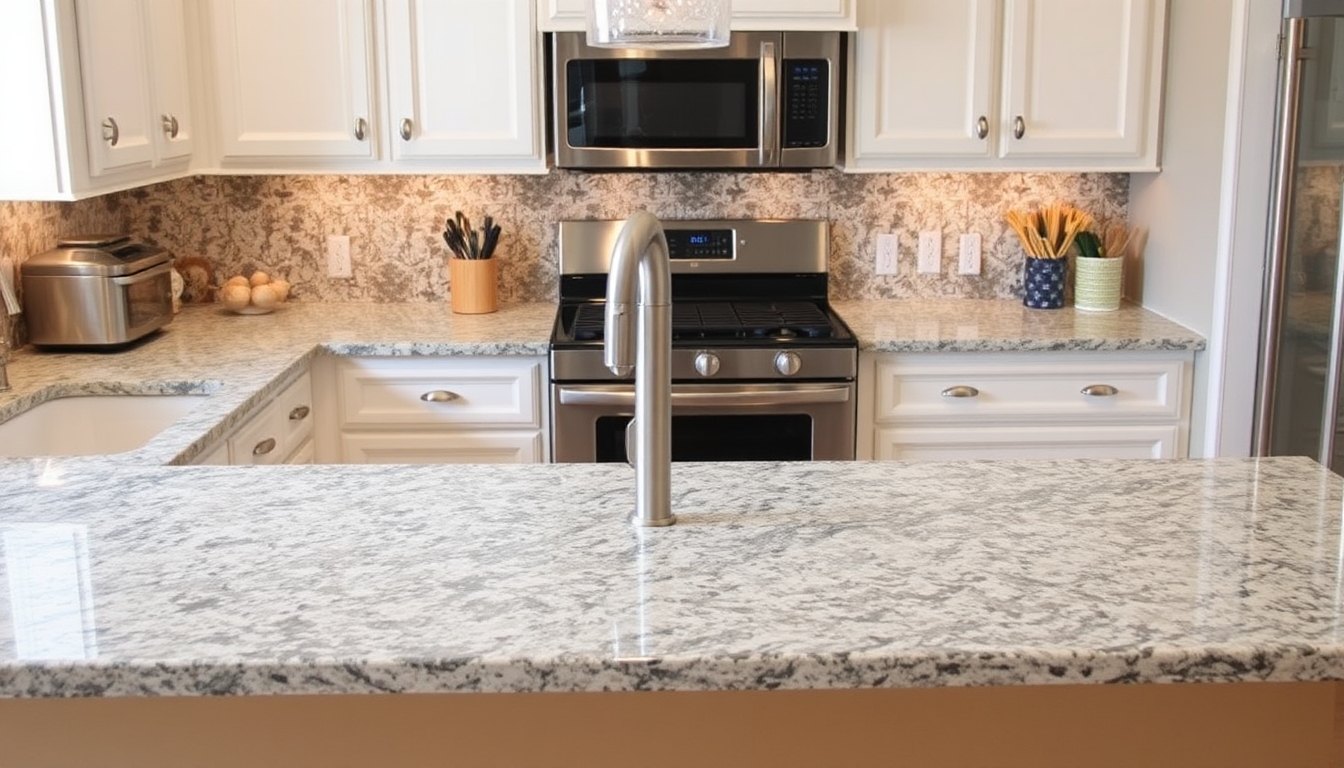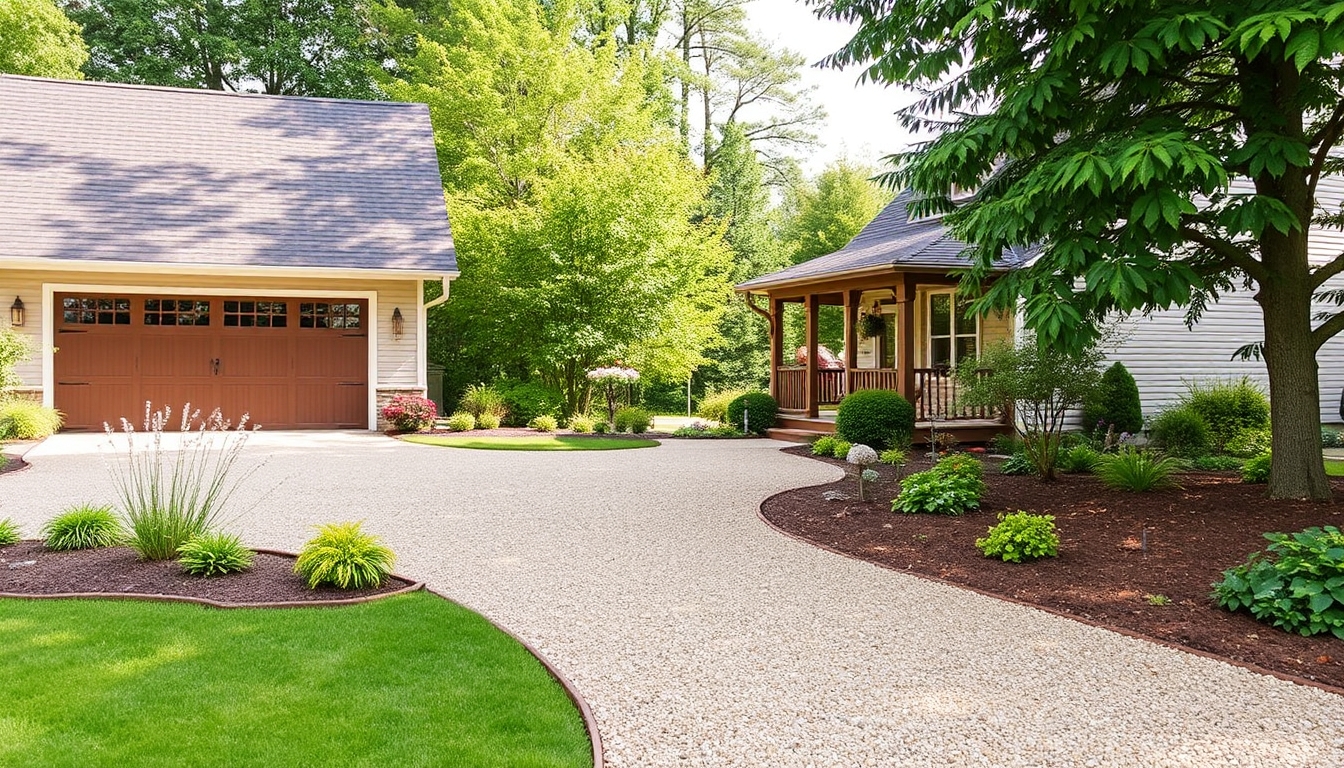Welcome to our blog where we’ll be sharing valuable insights on how to transform your driveway with a do-it-yourself chip seal. If you’re looking for a cost-effective and durable solution to enhance the appearance and functionality of your driveway, you’ve come to the right place. In this article, we’ll guide you through the step-by-step process of chip sealing your driveway, providing you with all the necessary information and tips to achieve professional-looking results. So, let’s dive in and discover the benefits of this popular technique and how you can easily implement it on your own.
The Benefits of Chip Seal DrivewaysCopied!
When it comes to choosing the right surfacing option for your driveway, chip seal offers a range of benefits that make it a popular choice among homeowners. Here are some key advantages:
1. Cost-Effective Solution
One of the main advantages of chip seal driveways is their affordability. Compared to other surfacing options like concrete or asphalt, chip sealing is a cost-effective solution that can help you save money without compromising on quality.
2. Durable and Long-Lasting
Chip seal driveways are known for their durability and longevity. The combination of crushed stone and asphalt used in the chip seal process creates a sturdy surface that can withstand heavy traffic, extreme weather conditions, and the test of time.
3. Enhanced Traction and Safety
Another benefit of chip seal driveways is their excellent traction. The rough surface texture created by the aggregate chips not only provides better grip for vehicles but also improves safety by reducing the risk of skidding or sliding, especially during wet or icy conditions.
4. Versatile Appearance
Chip seal driveways offer a unique and versatile appearance that can complement various architectural styles. The variety of aggregate chip colors and sizes available allows you to customize the look of your driveway, adding curb appeal to your property.
5. Easy Maintenance
Maintaining a chip seal driveway is relatively easy and cost-effective. Regular sweeping and occasional resealing are usually sufficient to keep the surface in good condition. Additionally, any minor repairs can be easily addressed by applying a new layer of chip seal.
6. Environmentally Friendly
Choosing a chip seal driveway is an environmentally friendly option. The use of recycled materials in the chip seal process reduces waste and the need for additional mining or quarrying of new materials, making it a sustainable choice for your driveway.
Now that we’ve explored the numerous benefits of chip seal driveways, let’s move on to the step-by-step process of how you can achieve professional results with a do-it-yourself approach.
DIY Chip Seal: Step-by-Step GuideCopied!
Now that you understand the benefits of chip seal driveways, let’s delve into the process of creating your own. Follow these step-by-step instructions to achieve professional results:
1. Prepare the Driveway
Start by thoroughly cleaning your driveway. Remove any dirt, debris, or vegetation using a broom, pressure washer, or a combination of both. Pay special attention to any cracks or potholes, as they will need to be repaired before proceeding.
2. Repair Cracks and Potholes
If your driveway has any cracks or potholes, it’s important to repair them before chip sealing. Use a suitable crack filler or asphalt patching compound to fill in the gaps, following the manufacturer’s instructions. Allow the repairs to fully cure before moving on to the next step.
3. Apply a Binder Coat
Next, apply a thin layer of asphalt binder to the entire surface of your driveway. This binder will help the aggregate chips adhere to the asphalt and create a strong bond. Use a squeegee or a sprayer to evenly distribute the binder, working from one end of the driveway to the other.
4. Spread the Aggregate Chips
While the asphalt binder is still wet, spread the aggregate chips evenly over the entire surface. The size and color of the chips can be chosen based on your preference and desired aesthetic. Use a mechanical spreader or a shovel to ensure an even distribution of the chips.
5. Compact the Surface
To ensure proper adhesion and compaction, use a roller or a plate compactor to press the aggregate chips into the asphalt binder. This step helps create a smooth and durable surface. Make multiple passes over the entire driveway until the chips are firmly embedded in the binder.
6. Allow for Curing Time
After compacting the surface, allow the chip seal to cure for the recommended time, typically 24 to 48 hours, depending on the weather conditions. During this time, avoid driving or walking on the driveway to allow for proper setting.
7. Sweep Excess Chips
Once the chip seal has fully cured, sweep away any loose aggregate chips using a broom or a power blower. This step helps achieve a cleaner and more polished appearance for your driveway.
By following these step-by-step instructions, you can successfully create a chip seal driveway that enhances the aesthetics, durability, and functionality of your property.
Tips and Considerations for a Successful Chip Seal DrivewayCopied!
While chip sealing your driveway can be a rewarding DIY project, there are a few tips and considerations to keep in mind to ensure a successful outcome:
1. Choose the Right Weather
It’s important to choose the right weather conditions for chip sealing. Ideally, the temperature should be between 60°F and 85°F (15°C and 30°C) to allow for proper curing. Avoid chip sealing on extremely hot or cold days, as it can affect the quality of the final result.
2. Properly Mix the Asphalt Binder
When preparing the asphalt binder, make sure to follow the manufacturer’s instructions for proper mixing. Consistency is key, as an improperly mixed binder can lead to poor adhesion and durability. Take the time to thoroughly mix the binder to achieve the desired results.
3. Use the Right Equipment
Having the right equipment can make a significant difference in the outcome of your chip seal driveway. Consider renting or purchasing a mechanical spreader, a squeegee, and a roller or plate compactor to ensure an even distribution of the aggregate chips and proper compaction.
4. Maintain a Consistent Thickness
Throughout the chip sealing process, strive to maintain a consistent thickness of both the asphalt binder and the aggregate chips. This consistency will help create a smooth and durable surface. Pay attention to any areas that may require additional binder or chips to achieve a uniform finish.
5. Plan for Traffic Interruption
Once you’ve completed the chip seal process, allow sufficient time for curing before allowing vehicle traffic on the driveway. Plan accordingly and inform family members, guests, or service providers about the temporary interruption in driveway access to prevent any damage to the freshly sealed surface.
6. Regular Maintenance
To prolong the life of your chip seal driveway, regular maintenance is key. Periodically inspect for any cracks or signs of wear, and address them promptly by applying a new layer of chip seal or engaging in necessary repairs. Regular sweeping and cleaning will also help maintain its appearance and functionality.
By following these tips and considerations, you can ensure a successful chip seal driveway project that not only enhances the curb appeal of your property but also provides lasting durability and functionality for years to come.
Conclusion: A DIY Chip Seal Driveway for Lasting ResultsCopied!
Creating a chip seal driveway on your own can be a rewarding and cost-effective way to enhance the appearance and durability of your property. By following the step-by-step guide and considering the tips provided, you can achieve professional-looking results that will stand the test of time.
Enjoy the Benefits
With a chip seal driveway, you’ll enjoy the benefits of a cost-effective solution that provides durability, enhanced traction, and a versatile appearance. Its easy maintenance and environmentally friendly nature make it an attractive option for homeowners looking for a long-lasting and sustainable surfacing solution.
Take on the Project
Now that you have a comprehensive understanding of the chip seal process, it’s time to take on the project and transform your driveway. Remember to choose the right weather conditions, properly mix the asphalt binder, and use the appropriate equipment to ensure a successful outcome.
Maintain and Protect
To prolong the life of your chip seal driveway, regular maintenance and prompt repairs are essential. By addressing any cracks or signs of wear early on, you can prevent further damage and maintain the integrity of the surface. Regular sweeping and cleaning will also help preserve its appearance and functionality.
So, why wait? Get started on your DIY chip seal driveway project and enjoy the benefits of a cost-effective, durable, and visually appealing surface for your property.
Thank you for reading our comprehensive guide on creating a do-it-yourself chip seal driveway. Should you have any questions or need further assistance, feel free to reach out. Happy chip sealing!
Frequently Asked Questions (FAQs)Copied!
1. Can I chip seal my driveway without professional help?
Yes, you can chip seal your driveway without professional help. With the right equipment, materials, and following the step-by-step guide provided, you can achieve professional-looking results on your own.
2. How long does a chip seal driveway last?
A properly installed and maintained chip seal driveway can last anywhere from 5 to 10 years or even longer. Factors such as climate, traffic volume, and maintenance practices can impact the lifespan of the surface.
3. Can I apply chip seal over an existing driveway surface?
Yes, chip seal can be applied over an existing driveway surface. However, it’s crucial to ensure that the existing surface is in good condition, free from major cracks or damage. Any necessary repairs should be done before chip sealing.
4. What is the cost of chip sealing a driveway?
The cost of chip sealing a driveway can vary depending on the size of the area, the local material and labor costs, and any additional repairs or preparations needed. Generally, chip sealing is a cost-effective option compared to other surfacing methods.
5. Can I customize the appearance of my chip seal driveway?
Yes, you can customize the appearance of your chip seal driveway. There is a variety of aggregate chip colors and sizes available, allowing you to choose a combination that suits your aesthetic preferences and complements the architectural style of your property.
6. Is chip sealing environmentally friendly?
Yes, chip sealing is considered an environmentally friendly option. The use of recycled materials in the process reduces waste and the need for additional mining or quarrying of new materials, making it a sustainable choice for your driveway.
We hope these FAQs have addressed some of your questions about chip seal driveways. If you have any other inquiries or need further assistance, don’t hesitate to reach out. Happy chip sealing!
Expert Tips for a Professional-Grade Chip Seal DrivewayCopied!
For those seeking an even more professional-grade chip seal driveway, here are some expert tips to consider:
1. Properly Assess the Surface
Before starting your chip seal project, thoroughly assess the condition of your driveway surface. Look for any underlying issues, such as extensive cracking or structural problems, that may require professional attention. Addressing these issues beforehand will ensure a solid foundation for your chip seal.
2. Consider a Geotextile Fabric
For added strength and longevity, consider incorporating a geotextile fabric layer between the asphalt binder and aggregate chips. This fabric acts as a reinforcement, preventing cracks and increasing the overall durability of your chip seal driveway.
3. Use High-Quality Materials
Investing in high-quality materials, such as a premium asphalt binder and durable aggregate chips, can make a noticeable difference in the final result. These materials are often more resistant to wear and provide better adhesion, resulting in a longer-lasting and more visually appealing chip seal surface.
4. Apply Multiple Layers
To achieve a thicker and more robust chip seal, consider applying multiple layers of asphalt binder and aggregate chips. This technique enhances the strength and durability of the surface, making it better equipped to withstand heavy traffic and harsh weather conditions.
5. Seek Professional Assistance
If you’re unsure about tackling the chip seal process on your own or if your driveway requires extensive repairs or resurfacing, it’s always wise to seek professional assistance. Experienced contractors can assess your specific needs, provide expert advice, and ensure a high-quality chip seal installation.
6. Follow Maintenance Best Practices
Maintaining your chip seal driveway is crucial for its longevity. Regularly inspect the surface for any signs of wear or damage and promptly address them. Perform routine sweeping, cleaning, and resealing as needed to protect the surface and maintain its appearance.
By incorporating these expert tips into your chip seal project and ongoing maintenance routine, you can achieve a professional-grade driveway that will exceed your expectations in terms of both aesthetics and durability.
Exploring Alternative Driveway Surfacing OptionsCopied!
While chip seal driveways offer numerous benefits, it’s important to explore other surfacing options as well. Here are a few alternatives to consider:
1. Asphalt Driveways
Asphalt driveways are a popular and widely used option due to their durability, smooth surface, and ease of installation. They provide a sleek and uniform appearance and can withstand heavy traffic. However, they may require more maintenance and have a higher initial cost compared to chip seal driveways.
2. Concrete Driveways
Concrete driveways are known for their strength, longevity, and versatility. They offer a clean and modern look and can be customized with various finishes and patterns. While concrete driveways can be more expensive to install, they require less maintenance over time.
3. Gravel Driveways
Gravel driveways offer a rustic and natural aesthetic, often appealing to homeowners seeking a more rural or countryside look. They are cost-effective, easy to install, and provide good drainage. However, they may require more regular maintenance, as the gravel can shift and require occasional replenishment.
4. Paver Driveways
Paver driveways are a popular choice for their versatility and visual appeal. They come in a wide range of colors, shapes, and patterns, allowing for creative and customized designs. Paver driveways are durable, require minimal maintenance, and offer excellent drainage. However, they can be more costly and time-consuming to install.
5. Stamped Concrete Driveways
Stamped concrete driveways combine the durability of concrete with the aesthetic appeal of various patterns and textures. They can mimic the look of natural materials, such as stone or brick, at a lower cost. Stamped concrete driveways require regular maintenance and periodic resealing to preserve their appearance.
Each of these alternatives has its own set of advantages and considerations. When choosing the right surfacing option for your driveway, consider factors such as budget, desired aesthetic, maintenance requirements, and the specific conditions of your property.
By exploring these alternatives, you can make an informed decision that best suits your needs and preferences. Remember to weigh the pros and cons of each option and consult with professionals if needed to ensure a successful driveway installation.
Conclusion: Choosing the Right Driveway Surface for Your NeedsCopied!
Choosing the right driveway surface is an important decision that can greatly impact the functionality, aesthetics, and value of your property. Whether you opt for a chip seal driveway or explore alternative options, it’s crucial to consider your specific needs and preferences.
Weighing the Factors
When making your decision, consider factors such as budget, durability, maintenance requirements, climate conditions, and the overall look you desire. Each surfacing option has its own set of advantages and considerations, and what works best for one homeowner may not be the ideal choice for another.
Chip Seal: A Cost-Effective and Durable Option
Chip seal driveways offer a cost-effective and durable solution with benefits such as affordability, durability, enhanced traction, and a versatile appearance. They can be a great choice for homeowners looking for an economical and visually appealing surface.
Exploring Alternatives
However, it’s important to explore alternative options such as asphalt, concrete, gravel, paver, or stamped concrete driveways. Each option brings its own unique characteristics and can cater to different preferences and requirements.
Making an Informed Decision
To make an informed decision, assess your specific needs, consider the pros and cons of each surfacing option, and consult professionals if needed. They can provide valuable guidance and help you select the best driveway surface that aligns with your goals.
Remember that whatever surface you choose, regular maintenance and prompt repairs are essential to ensure the longevity and functionality of your driveway.
By carefully evaluating your options and choosing the right driveway surface, you’ll not only enhance the curb appeal of your property but also create a functional and durable surface that will serve you well for years to come.
Thank you for reading our comprehensive guide on choosing the right driveway surface. If you have any further questions or need assistance, feel free to reach out. Happy driveway surfacing!
In conclusion, creating a chip seal driveway can be a rewarding and cost-effective way to enhance the appearance and functionality of your property. With its affordability, durability, enhanced traction, and versatile appearance, chip seal offers numerous benefits that make it a popular choice among homeowners.
However, it’s important to explore alternative driveway surfacing options such as asphalt, concrete, gravel, paver, or stamped concrete driveways. Each option has its own advantages and considerations, and finding the right one for your needs requires careful evaluation and consideration of factors like budget, durability, maintenance requirements, and aesthetic preferences.
By following the step-by-step guide for DIY chip seal installation, considering expert tips, and making an informed decision about the best driveway surface for your specific circumstances, you can create a functional, visually appealing, and long-lasting driveway that enhances the overall value of your property.
Remember to prioritize regular maintenance and prompt repairs to ensure the longevity of your chosen driveway surface. Whether you choose chip seal or another option, a well-maintained driveway will continue to serve you well for years to come.
Thank you for reading our comprehensive guide on do-it-yourself chip seal driveways and exploring alternative surfacing options. If you have any further questions or need assistance, don’t hesitate to reach out. Happy driveway surfacing!





